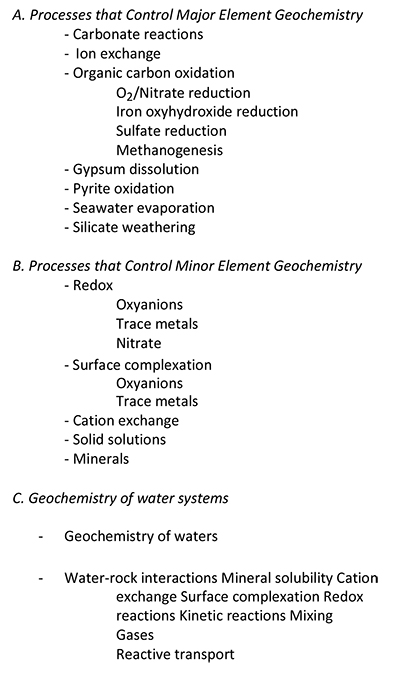
WORKSHOP ON ENVIRONMENTAL APPLICATIONS OF GEOCHEMICAL MODELLING
DATES: 4 -7 September 2018
VENUE: Wits University, Johannesburg
FACILITATOR: Dr Raymond Johnson
(Navarro Research and Engineering, Grand Junction, Colorado, USA)
COST: R5 000 per person (meals and refreshments included)
About the facilitator

Dr. Johnson is a geochemist/contaminant hydrogeologist with Navarro Research and Engineering, a contractor for the U.S. Department of Energy Office of Legacy Management. He has 10 years of experience working on reactive transport of uranium in legacy groundwater plumes and predictive modeling of uranium transport related to uranium in situ recovery sites. Much of his prior 15 years of experience in contaminant hydrogeology were related to metal transport in groundwater around areas with abandoned mine lands. He has been in his current position as a contractor for the U.S. Department of Energy for 2 years and was with the U.S. Geological Survey in Denver, Colorado for the prior 12 years. He has published many peer-reviewed articles and reports for the USGS. He has also conducted workshops on geochemical modelling throughout the US and Europe.
Workshop Description:
The workshop is provided as an opportunity for participants to obtain one-on-one instruction in the application of geochemical models to their specific water investigations. Participants can bring their own geochemical data for their projects, including complete major ion chemical analyses and mineralogical and hydrologic knowledge of the aquifers (where groundwater is involved). Modeling approaches will be tailored to the specific needs of each project and may include any combination of trend identification, speciation modeling, inverse modeling, reaction modeling, and 1- or 3-D reaction-transport modeling. Available modeling tools include PHREEQC and PHAST. Potential outcomes for individual projects may include identification of data needs, identification of geochemical processes, constraints on directions and rates of groundwater flow, quantification of the extents and rates of geochemical processes, and prediction of the evolution of groundwater chemistry.
Participants should bring their own laptops. Instructions on how to download the software will be given.
The following aspects will be covered:
